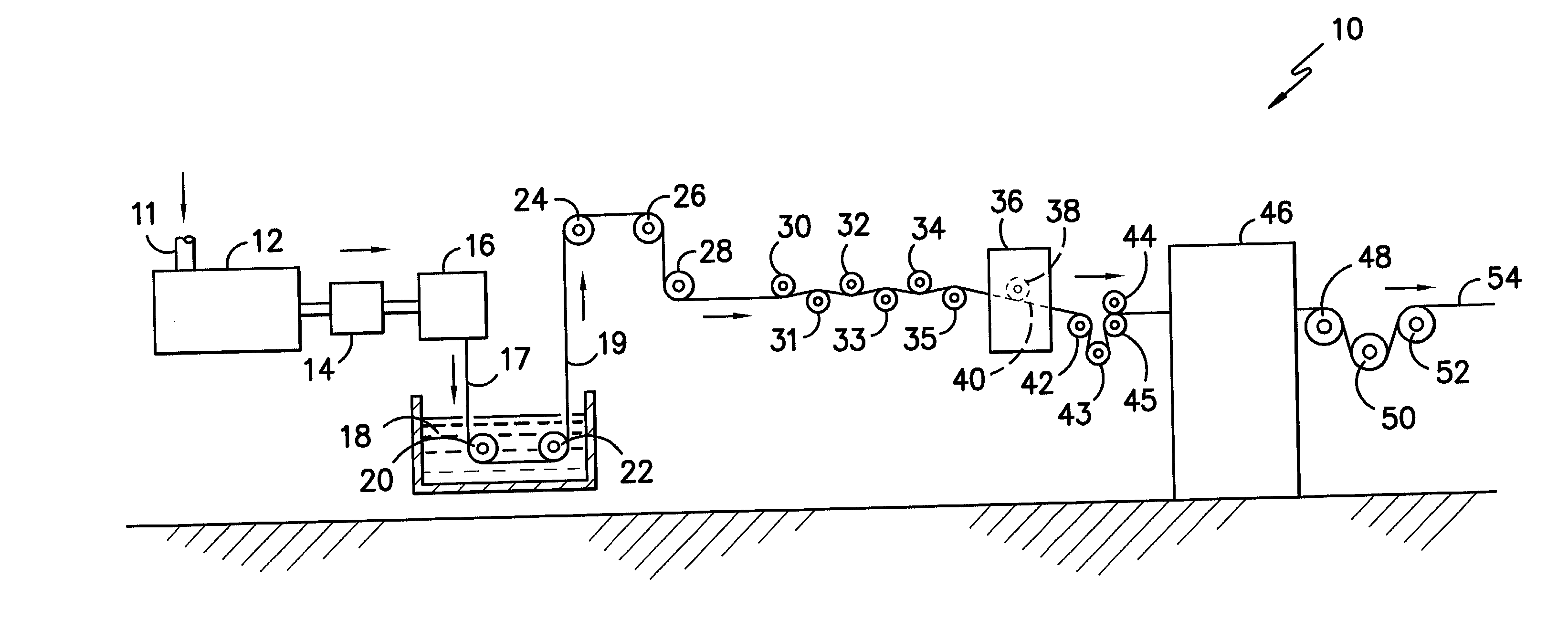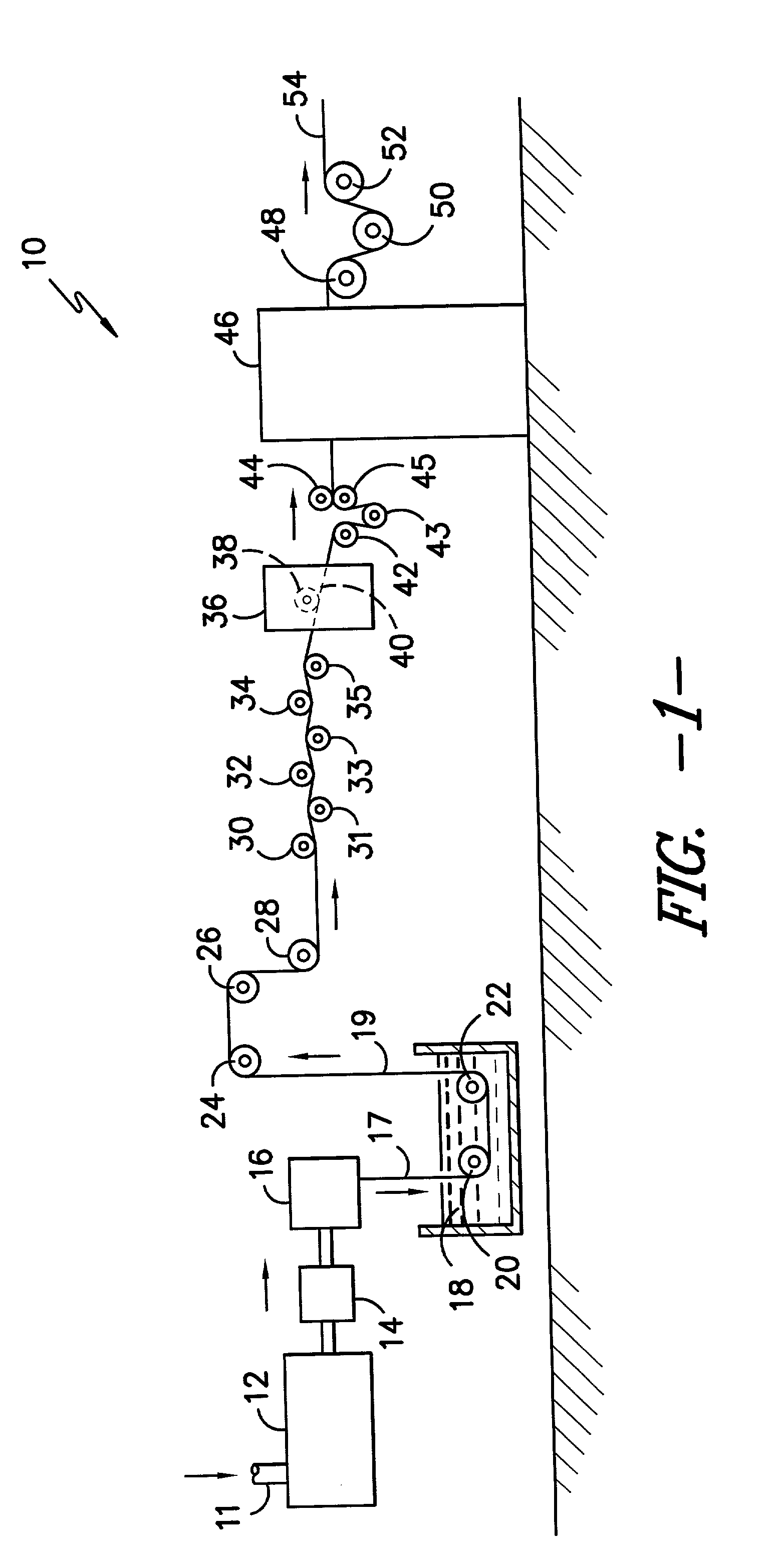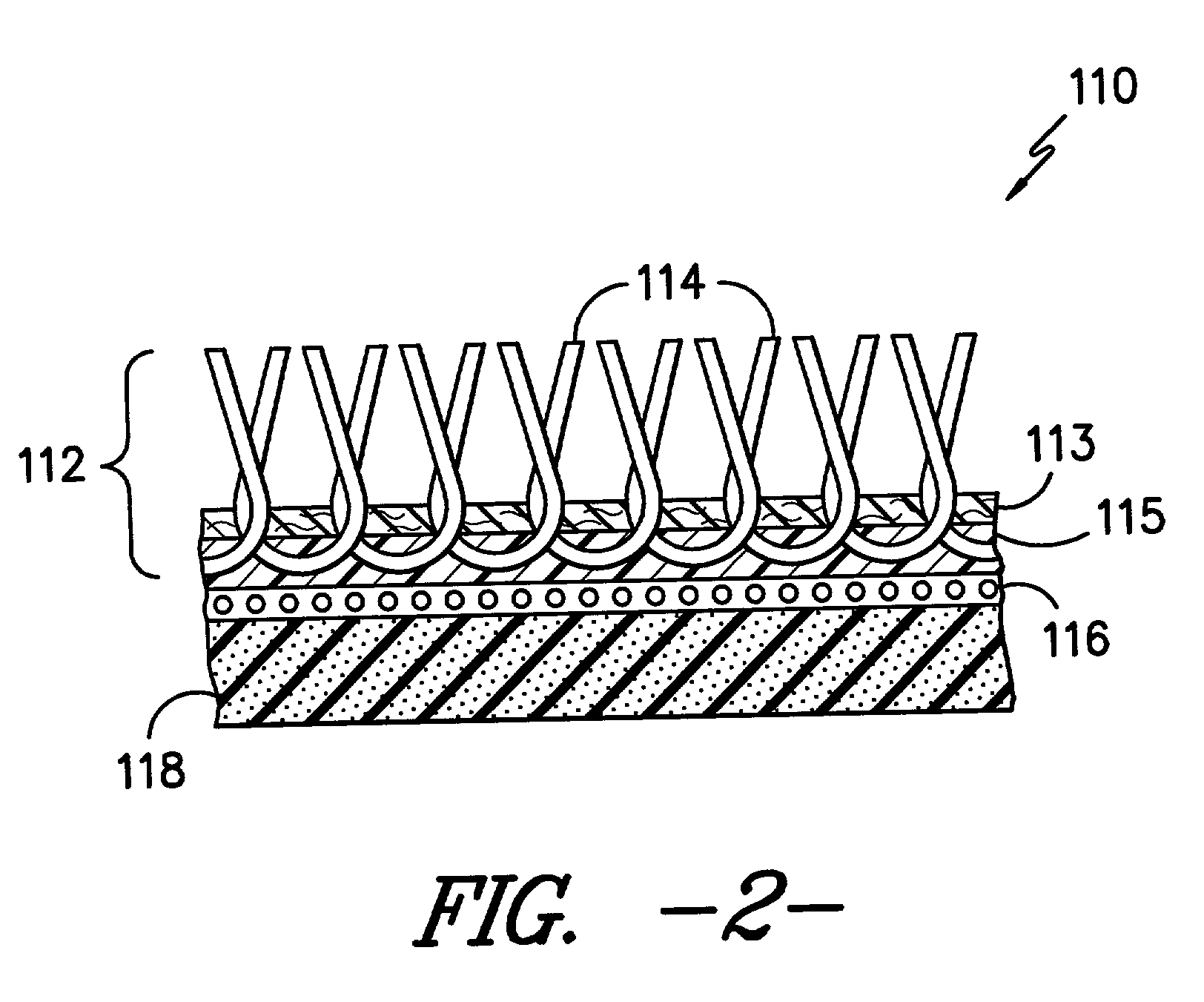Unfortunately, prior applications utilizing standard polypropylene tape fibers have suffered from relatively high shrinkage rates, due primarily to the tape fiber constituents.
Heat,
moisture, and other environmental factors all contribute to shrinkage possibilities of the tape fibers (and yarns made therefrom), thereby causing a residual effect of shrinkage within the article itself.
Thus, although such polypropylene fibers are highly desired in such end-uses as carpet backings, unfortunately, shrinkage causes highly undesirable warping or rippling of the final carpet product.
Or, alternatively, the production methods of forming carpets (such as, for example, carpet tiles) compensate for expected high shrinkage, thereby resulting in generation of waste materials, or, at least, the loss of relatively expensive amounts of finished carpet material due to expected shrinkage of the carpet itself, all the result of the shrinkage rates exhibited by the carpet backing fibers themselves.
Furthermore, such previously manufactured and practiced tape fibers suffer from relatively low tensile strengths.
However, even with such impressive and beneficial properties and an abundance of polypropylene, which is relatively inexpensive to manufacture and readily available as a
petroleum refinery byproduct, such fibers are not widely utilized in products that are exposed to relatively high temperatures during use, cleaning, and the like.
This is due primarily to the aforementioned high and generally non-uniform heat- and moisture-shrink characteristics exhibited by typical polypropylene tape fibers.
These extremely high and varied shrink rates thus render the utilization and processability of highly desirable polypropylene fibers very low, particularly for end-uses that require
heat stability (such as carpet
pile, carpet backings, molded pieces, and the like).
Such shrinkage unfortunately dominates the dimensional configuration of the printed tufted substrate as well and thus dictates the ultimate dimensions of the overall product prior to attachment of a secondary backing.
If printing is not desired, there still exist potential problems in relation to high-shrink tape fiber primary backing fabrics, namely the instance whereupon a latex
adhesive is required to attach the remaining secondary backing components (as well as other components) to the tufted substrate / primary backing article.
Upon
exposure to sufficiently high temperatures, the sandwiched polypropylene tape fiber-containing primary backing will undergo a certain level of shrinkage, thereby potentially causing buckling of the ultimate product (or other problems associated with differing sizes of component parts within such a carpet article).
To date, there has been no simple solution to such problems, at least that provides substantially the same tensile strength exhibited by such higher-shrink tape fibers.
Unfortunately, molecular
weight control is extremely difficult to accomplish initially, and has only provided the above-listed shrink rates (which are still too high for widespread utilization within the fabric industry).
Furthermore, the utilization of very
high heat-setting temperatures during mechanical treatment has, in most instances, resulted in the loss of good hand and feel to the subject fibers.
This process, while yielding an acceptable
yarn, is expensive, making the resulting fiber uncompetitive as compared to
polyester and nylon fibers.
As a result, there has not been any teaching or disclosure within the pertinent prior art providing any heat- and / or moisture-shrink improvements in
polypropylene fiber technology.
Additionally, it has been found that these limited shrink-rate improvement procedures for non-tape fibers do not transfer to tape fibers to provide any substantial low-shrink benefits.
 Login to View More
Login to View More 


